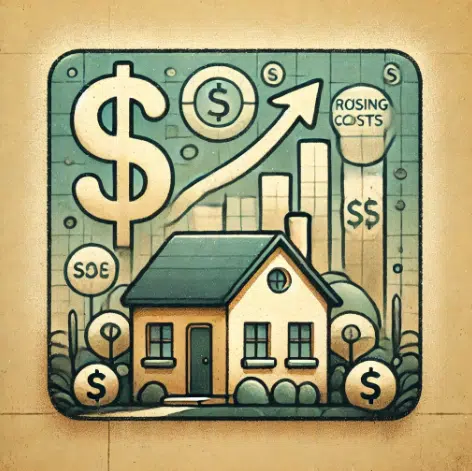Managing the rise in housing costs has become a critical issue for many families across the United States. With rental prices and property values skyrocketing, numerous individuals are finding it increasingly difficult to secure affordable living spaces.
This trend is driven by various factors, including urbanization and demand outpacing supply. As housing expenses continue to climb, it’s essential for individuals and families to adopt strategies that enable them to manage their finances effectively.
Utilizing a comprehensive approach can make a significant difference in how households cope with escalating expenses. We’ll delve into strategies related to financial planning, exploring affordable options, and making wise investment choices.
By implementing these techniques, you can mitigate some of the burdens associated with current housing market trends. Additionally, it is important to understand the impact of broader economic factors and policy decisions on these costs, which may offer insights into future market shifts.
Understanding the causes of rising housing costs
The increase in real estate prices can be attributed to several key factors. Urbanization, a growing population, and increased demand for housing contribute to higher prices. Cities across the U.S. are experiencing rapid growth, leading to a shortage of available homes.
This results in competition among buyers and renters, driving costs upward. Construction expenses have also risen due to supply chain interruptions and higher costs for materials. Additionally, interest rates and inflation play a role in making housing more expensive.
Policies and zoning laws can also impact housing affordability. Restrictions on construction in certain areas limit the number of new homes, straining the existing supply. Regulatory costs associated with new housing developments add to the final price of homes.
Understanding these contributing factors is crucial for individuals looking to navigate the current market. It’s clear that a combination of market forces, economic conditions, and policy decisions all play a part in rising housing expenses.
Strategies for renters
For tenants, finding ways to manage housing expenses requires creativity and resourcefulness. One of the most effective methods is to explore sharing spaces. Renting with roommates can significantly reduce individual rent and utility costs.
Additionally, subletting a room or taking on a temporary boarder can help alleviate financial pressure, particularly in high-cost areas. Tenants can also consider negotiating their lease terms with landlords. Discussing potential discounts for long-term agreements or offering to take on minor maintenance tasks can sometimes yield a rental reduction.
Looking beyond traditional rental housing is another option. Consider alternatives such as co-housing communities or smaller units like studio apartments. These formats often come with lower prices and can be more manageable for singles or small families. It’s also worthwhile to investigate housing assistance programs offered by local or federal government entities, which can provide subsidies or tax credits to eligible individuals and families.
Strategies for homeowners
Homeowners also face challenges in managing ongoing housing costs amidst price surges. A key strategy is refinancing existing mortgages. By taking advantage of lower interest rates, homeowners can reduce their monthly mortgage payments and save on interest over the life of the loan.
It’s essential to evaluate the refinancing options and choose the one best suited to individual financial circumstances. An additional tactic is to tap into home equity for value-generating investments. Renovating or enhancing parts of the home can increase its market value, offering potential financial gain if you choose to sell in the future.
Improvements geared towards energy efficiency can also reduce utility expenses, providing savings in the long run. Taking advantage of tax incentives related to renewable energy installations can further offset costs.
Long-term planning for housing stability
Planning for long-term housing security requires forward-thinking and proactive measures. One effective approach is to enhance earning potential through education and skill development. A higher income can provide more flexibility in housing choices.
Consider pursuing additional qualifications or certifications in growing industries to boost earning capacity. Savings and investment strategies also play a crucial role in long-term planning. Establishing a solid savings plan provides a financial cushion for unforeseen circumstances and potential housing opportunities.
Investing in diversified assets, such as stocks or mutual funds, can offer additional revenue streams. Over time, these investments can grow significantly, providing increased financial security. Additionally, staying informed about local and national housing policies can help individuals make better decisions.
Leveraging government and community resources
Community and government resources offer vital support in navigating housing costs. Utilize local housing authority programs that offer subsidies for low-income families or assistance with down payments.
These resources are designed to make housing accessible to those struggling to afford market rates. Many states have dedicated funds for first-time homebuyers, providing opportunities for those new to homeownership. Engaging with community organizations can also be beneficial. Nonprofit entities often offer financial literacy programs, budgeting advice, and resources for affordable housing.
Joining local housing cooperatives could provide access to shared resources and reduced housing costs. Collaborating with these organizations can offer support and guidance tailored to specific community needs, ultimately leading to more stable housing opportunities.





